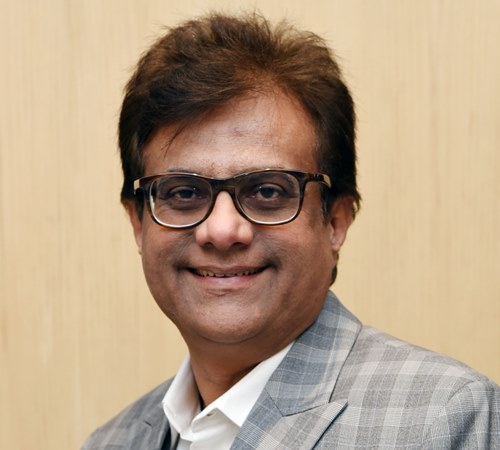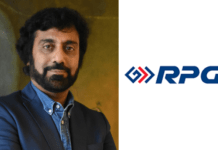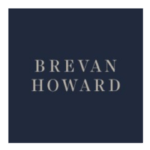An alumnus of the Tata Institute of Social Sciences, and an accredited coach (ACC) recognised by the International Coach Federation, Makarand Khatavkar, group head–human resources, Kotak Mahindra Bank, has built HR teams from scratch, more than once.
A seasoned HR professional, Khatavkar’s career spans three decades. He has spent around 20 years in the BFSI sector alone. Prior to joining Kotak, he led HR at Deutsche Bank.
He speaks to HRKatha, on how the banking industry is realigning its people’s strategy with the changing business environment, and the plans specific to Kotak Mahindra’s employee engagements.
If you were to sell Kotak Mahindra to a potential employee, how would you do it?
I would say it offers a unique entrepreneurial culture and an environment that allows the employee to learn and grow, be a leader and build a positive legacy.
Our employee value proposition (EVP) is branded as FLAME. (Focus on Results, Leadership, Active Involvement/Inclusiveness, Maximum Challenge and Entrepreneurial Creativity).
Kotak’s USP lies largely in its vision and values. The brand stands for many ‘firsts’ under the leadership of Uday Kotak and his home-grown leadership team. With its diverse and innovative products and services, and strong market presence in the broad spectrum of financial services, brand Kotak by itself is a huge draw for potential candidates.
What does ‘FLAME’ exactly translate into? Can you please elaborate?
It translates into three key things.
First, it’s a balance of ownership and accountability where even stretch targets are seen as a positive challenge to achieve organisational goals
Second, it implies a workplace atmosphere, which is open to feedback, incubates ideas and enables people to build and nurture products and business.
And third, it provides an opportunity to move across the length and breadth of the entire Kotak Group Companies, allowing exposure to all aspects of financial services.
What’s the best part of working with Kotak Mahindra? Can you point out something unique, which other players in the category cannot offer?
The best part about working at Kotak is that the employees have the comfort of being ‘employed’ while also satisfying their desire to be ‘entrepreneurs’.
“Even when one did not recognise words, such as baby boomers or Gen X and Gen Y, a Transaction Analysis theory held true.”As I had mentioned earlier, the Group encourages professional entrepreneurship. Every employee is empowered to be courageous, flexible and a creative risk-taker. If an employee has a good idea, the organisation provides all the necessary support to build and nurture it.
And, remember, this is not restricted to business ideas alone. Creating professional entrepreneurs and encouraging entrepreneurial creativity has naturally found its way into our core values and employee value proposition (EVP) as well.
This is why, a majority of our workforce would say that they don’t feel like an employee at Kotak, rather, it’s like running one’s own business.
With fresh licences being issued, banks are likely to witness up to 50 per cent increase in attrition this year, compared to last year. What special measures have you undertaken to retain people in this volatile environment?
I would say the ’50 per cent’ figure is over exaggerated. Besides, attrition is a reality for any large retail organisation in India today. It will continue to remain a constant challenge for India Inc.
There have been several economic, industrial and regulatory-linked ups and downs, including the downturn in 2008–09, and also granting of new bank licenses in 2013 by the Reserve Bank of India.
We, as an organisation, do not react in an episodic manner. Instead, every initiative or programme designed for our employees and customers, is built on a robust, sustainable and scalable model. Our people practices are aligned to the organisation’s culture and values, and focussed on creating a workplace where the employees experience trusting relationships with co-workers and managers.“When 70 per cent of an organisation is made up of frontline teams, it is critical to maintain a target-oriented and largely quantitative assessment framework.”
Similarly, managers conduct continuous performance dialogues and look out for the employees’ career progression as well as overall well-being.
In addition, an entrepreneurial environment offers abundant opportunities to learn through on-the-job as well as formal learning methods.
Hence, to answer your question, employee engagement and retention through rational and emotional measures is an inherent part of our ongoing people policies and practices.
Many large companies in India are doing away with the bell curve. Do you think Indian private banks can also do away with a performance assessment system, when everything is so target oriented?
First of all, I would like to suggest that the bell curve is an outcome of a robust performance process. A target-oriented assessment system will continue to exist with or without the bell curve.
In any organisation, whether large or small, weightage given to qualitative measures usually increases as one moves up the hierarchy. But, when 70 per cent of an organisation is made up of frontline teams, it is critical to maintain a target-oriented and largely quantitative assessment framework for that work-force in order to meet the business targets.
At the same time, managers and supervisors of the frontline teams, need to be equipped with the right set of competencies to manage and maximise the potential of their respective teams.
The bell-curve exercise typically helps in moderating the skew of ratings in organisations with large employee bases, in taking compensation and bonus- related decisions. The bell curve is one of the many tools that we employ in taking people decisions and should not be confused with the bank’s performance management philosophy.
A good performance management framework will be aligned to the organisation’s values and integrated with the organisation’s talent philosophy to assess future potential and not just current performance levels. The focus will be on the quality and periodicity of the performance assessment or dialogue, irrespective of the bell curve.“Managing and leveraging ‘diversity’ is the real challenge at the workplace, and not multiple generations.”
At Kotak too, we have adopted a granular performance management framework ,where, depending on the function or role of the employee, the performance assessment could be as frequent as daily, weekly, monthly or quarterly, over and above the annual performance appraisal cycle.
Our assessment framework has several ‘gate’ KRAs, which link the input quality to the output parameters, making sure the ‘how’ is as critical as the ‘what’.
Adherence to the organisation’s core values is also a part of the measurement and so are the cluster-linked competencies depending on whether the employee is an individual contributor or manager.
What is the growth trajectory in the private banks? Do you think financial institutions have a robust leadership development programme? Can you share some examples?
Banking will continue to remain the sunrise sector for the next several years. India offers huge opportunities in this sector. In my view, private sector banks will continue to grow at significant rates. The overall growth agenda will generate employment and we will need top-rated talent. New initiatives, such as digital and mobile banking are changing the nature of competition and talent pool, for banks in particular.
Strategic leadership development is a key part of our management agenda. We are running several initiatives, such as cultivating home-grown talent, promotions from within, job rotations, training at IIMs and at global business schools like Harvard and Wharton.
You have spent two decades in the BFSI sector. What have been the learnings while managing people in this sector? What are the biggest HR challenges?
I have been fortunate to have spent more than two decades in the BFSI sector. I have learned from very influential and powerful leaders of the BFSI industry. I’m excited by this sector because it is competitive, demanding and one gets to work with some of the sharpest minds, and the most educated people from India and abroad.
BFSI employs knowledge workers who are discerning, self-driven and demanding. They are extremely client-focussed and demand a lot from themselves. Logically, they demand similar focus and attention from HR. The bottom line is clear—deliver value and get valued by business.
The biggest HR challenge is talent attraction and retention. Leadership development continues to be a challenge for India Inc., and the BFSI sector is no exception.
Is managing a multigenerational workforce the biggest challenge for HR today? How does one make a cohesive team, leveraging each one’s strength?
I would like to believe that the workforce challenge is not restricted to the aspect of generations alone. In fact, it takes me back to the text book days, when I learnt of Transaction Analysis and how individuals operated as Parent, Adult or Child, irrespective of age or generation. So, even when one did not recognise words, such as baby boomers or Gen X and Gen Y, a TA theory held true. There were challenges related to making cohesive teams simply because different individuals operated in different modes of parent, child, etc. at a point in time.
“The bell-curve exercise typically helps in moderating the skew of ratings in organisations with large employee bases, in taking compensation and bonus- related decisions.”The challenge in my view is not generation alone, but managing and leveraging ‘diversity’ to benefit individuals and the organisation—diversity in terms of age, education, background, experience, gender, etc. The one way to address this is by avoiding a broad-brush approach. In other words, accepting that one size doesn’t fit all and that we need different strokes for different folks!
To make a cohesive team, it is critical to understand the team’s dynamics. And as HR folks, we can create a culture of mutual respect, build adequate communication channels and train managers on managing diverse teams and avoiding unconscious biases.
A few years ago, when Kotak was going through an exponential growth phase, we conducted ‘Storming Workshops’ – wherein certain psychometric tools were used to educate teams and managers about each other’s work styles and help them leverage each other’s strengths to create productive and efficient teams.
Value our content... contribute towards our growth. Even a small contribution a month would be of great help for us.
Since eight years, we have been serving the industry through daily news and stories. Our content is free for all and we plan to keep it that way.
Support HRKatha. Pay Here (All it takes is a minute)





































Hey,
Social Media is almost DEAD!
No matter what you post, go live or how much money you spend on ads..
You just can’t get the traction & results you used to get.
So where did all the traffic go? Actually, it’s been REINVENTED to give you an UNFAIR ADVANTAGE if know how to exploit it..
==> How to exploit it and get 100k visitors/month: https://www.databaseen.com/reelrampageai
The biggest thing happening in social media right now is “Instagram Reels!”
And if you’re not using this “SECRET SAUCE” AI technology + Ram’s private strategies to get more reach, followers, traffic & sales – You are missing out BIG TIME.
Newbies, people with no real skills, no experience, no idea, and some just by pure luck, unknowingly are pulling in 10k, 100k even 1M visitors for every reel they post..
With ReelRampage AI, you can easily create 100s of HYPER-ADDICTIVE, attention-grabbing Instagram Reels that drive traffic & sales to your websites, blogs, and offers in just 3 clicks..
==> WATCH QUICK DEMO HERE: https://www.databaseen.com/reelrampageai
ReelRampage AI is available for a Low One Time Price during its public launch for the next few days only..
After this week, it will turn into a higher recurring subscription price model.
Act fast and get your account at the lowest price ever.
==> Get ReelRampage AI For A Low One-Time Price Now: https://www.databaseen.com/reelrampageai
See you inside.
All the best
Lonnie Parker
UNSUBSCRIBE: https://www.databaseen.com/unsubscribe
Address: 1303 Bird Spring Lane
Kemah, TX 77565
I reviewed your website, to see who to speak with regarding a pending Utility Audit.
Please have whoever is in charge of the business call me at their earliest convenience.
I need to validate specific details that may uncover hidden errors in the utility bill that could warrant substantial refunds.
Thank you!
David Sebastian
Utility Audit Advisor
Direct: (833) 302-1808 ext. 740